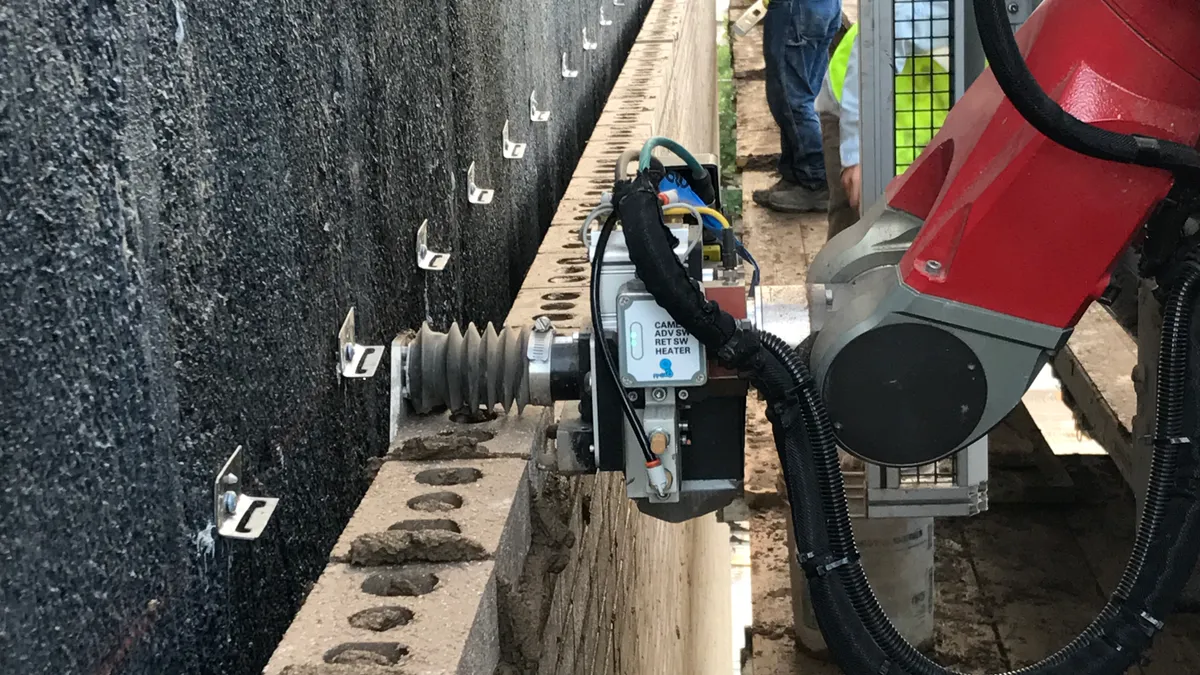Dive Brief:
- Construction of large structures by smaller, autonomous robots coordinating with each other is “rapidly gaining momentum” in the field of robotics research, finds a new study from Science Robotics, and can address a “critical societal need for safe, inexpensive, sustainable and automated construction.”
- Collective robotics, by which several robotic systems modify a shared environment, allows companies to integrate design, construction and other controls, according to “A review of collective robotic construction” written by five academics. An opportunity exists for these systems to achieve labor savings and productivity throughout the full lifecycle of building, the study finds, by carefully selecting and preparing a site, assembling or breaking down scaffolds and demolishing other structures, and more.
- This area will continue to develop along with advances in robotics technology; computing; algorithms for streamlining coordination; sensors, which allow them to interact in space and detect progress; and more, according to the report.
Dive Insight:
When technology has advanced to the point that autonomous robotic construction like this can take place on a large scale, it could play a key role in eliminating safety issues in the construction industry, which account for 20% of all worker injuries in the U.S., according to Labor Department data cited in the study.
In addition, as the population of people living in cities increases from 54% to 66% in 2050, according to the study, collective robotics can help meet the urban construction demand that a limited workforce is struggling to keep up with. But robots are best supplemented by humans, the authors note, because mistakes are inevitable.
Most of the construction robots operating at a large-scale today are single systems, but they are achieving some of the same safety and labor-saving benefits.
The two categories of materials that construction robots handle are discrete, which pertains to individual objects like bricks or blocks, and continuous, which references a flow of concrete, fibers and other substances. Construction Robotics’ SAM 100 is a mobile robotic arm that automates the repetitive bricklaying process at a rate that the company says is three to five times more productive than a human mason and involves 80% less lifting. Its sister robot MULE takes the strain off human workers as they lift, handle and place blocks or other items on the site.
In the continuous category is the Cybe Construction-designed robot that 3D-printed a house in Milan last year using a mix of concrete and other additives. Concrete was squeezed through the robot’s nozzle in layers, Dezeen reported, and the full structure was completed within 48 hours, according to engineering firm Arup.
And as construction robotics continues to develop, the industry may discover some unexpected use cases, according to the Science Robotics report, such as disaster relief or construction in risky environments. U.S. Marines from the 1st Marine Logistics Group at Camp Pendleton in California, for example, said the concrete footbridge they were able to print in the field could be effective for operational and humanitarian relief efforts.












